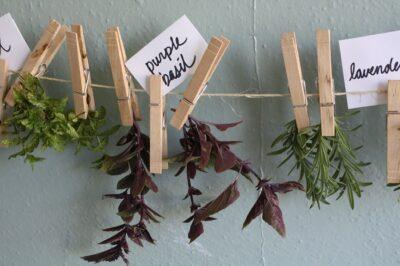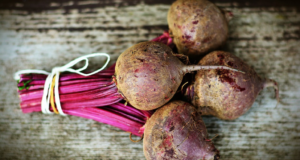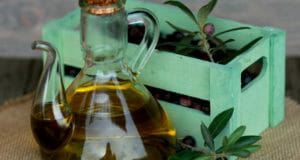
Image source: FettleVegan.com
This is a terrific time of year to gather herbs for winter use. It is easy and fun. Even children can help. Stock up now and you will have the flavors and healing plants of summer this winter.
Herbs may be gathered from your garden or from the wild. If wild crafting, be sure that you only take a small amount of the plants to ensure that future generations of wild herbs will be plentiful. If you are gathering on land that you do not own, obtain permission from the landowner. Be sure that you only pick herbs which grow in clean environments that have not been sprayed with chemicals or exposed to exhaust from nearby traffic. Some public parks will allow you to gather small amounts of plant material for your personal use, but always check with the park authorities first as picking may be prohibited and you may be fined.
Always be certain that you are identifying plants correctly. Either pick under the guidance of a plant and herb expert or use a minimum of three references to cross check the identification of any wild plant.
Tips for Picking Your Herbs
The best time for picking herbs is in the late morning on a sunny, dry day. This allows the dew to dry off of the plants. Concentrations of essential oils are at their peak at this time as well. In addition, this is likely to be a wonderful time of the day to be outside, which makes your work quite enjoyable.
Depending upon the plant, you may simply pick with your hands, but you will need scissors or a sharp knife to harvest some of the plants. Baskets and lightweight containers are my preferred receptacles for the herbs. Only pick what you can process that day.
New “Survival Herb Bank” Gives You Access to God’s Amazing Medicine Chest
Summer is the time to gather above-the-ground plant parts, including leaves, berries and flowers. If summer storms have brought down branches, you may want to harvest the bark from the branches, as well. Either consult an herbalist or an herbal reference book to learn which part of the plant should be preserved and to learn the best preservation methods.
Preserving Your Herbs
There are countless ways to preserve herbs. Which method you choose depends upon several factors. Are you preserving some basil in the form of pesto? If so, you can make pesto and freeze it in ice cube trays. Would you like herbal vinegar made from raspberries and lemon verbena? Do you want some dried chamomile so that you can enjoy a cup of tea next winter? You could make a tincture with some boneset to provide comfort during flu season next winter. Do you have children who may need herbal cough syrup this winter? Herbs may be dried, preserved in various liquids, and made into a wide array of products for future use.
Drying Your Herbs
Drying is the simplest way of preserving herbs. Qualities of the herb and the volume of plant material that you are preserving will help you determine how to dry your herbs. Herbs need to be dried in warm, dark environments for best results. Store your dried herbs in a dark room temperature cabinet. Be sure to label containers with the name of the contents and date of preparation, as identifying dried herbs can be quite difficult. I like to leave the plant parts that I am preserving in large pieces as they stay fresh longer that way. Dried leaves and flowers will stay fresh for about a year.
Drying Herbs by Hanging
The traditional method of cutting herbs and simply gathering a small handful of them into a bunch to hang and dry is quite effective. Secure each bunch with string or a rubber band. Hang the herbs upside down from a beam in a clean attic, or other dark place. If you do not have a dark place, you may choose to place a paper lunch bag loosely over the herb bunch if you are trying to maintain the plant’s color. Check your herbs every couple of days. Depending upon the weather and plant’s moisture content, it may take a few days or a couple of weeks for your herbs to dry completely. When the herbs are dry, take the herbs down and crumble the leaves or flowers from the stems.
Other Methods of Drying Herbs
Several other techniques may be used to dry herbs. You can use a dehydrator for berries, leaves and flowers. The time required for drying varies greatly. I usually change the position of my trays frequently to ensure even dying. Do not overload the dehydrator. Using a dehydrator is fast. The color of the plants is often maintained better than with air drying.
Clean old window screens make great drying tools. Simply lay a single layer of leaves or flowers on a screen. Keep it in a warm dark place. Once or twice daily, shuffle the herbs around to ensure even drying. This technique is excellent if you have a large amount of leafy herbs to dry.
Some people use a microwave to dry herbs. The results are quite variable. I do not recommend this method unless you need a small amount of a dried herb immediately.
Preserving herbs is an ageless tradition which feeds the soul now and the body next winter. It saves you money, and ensures that you have top quality herbs on hand year round.
What are your favorite ways of preserving herbs? Share your tips in the comments section below.
Sign up for Off The Grid News’ weekly email and stay informed about the issues important to you
 Off The Grid News Better Ideas For Off The Grid Living
Off The Grid News Better Ideas For Off The Grid Living




